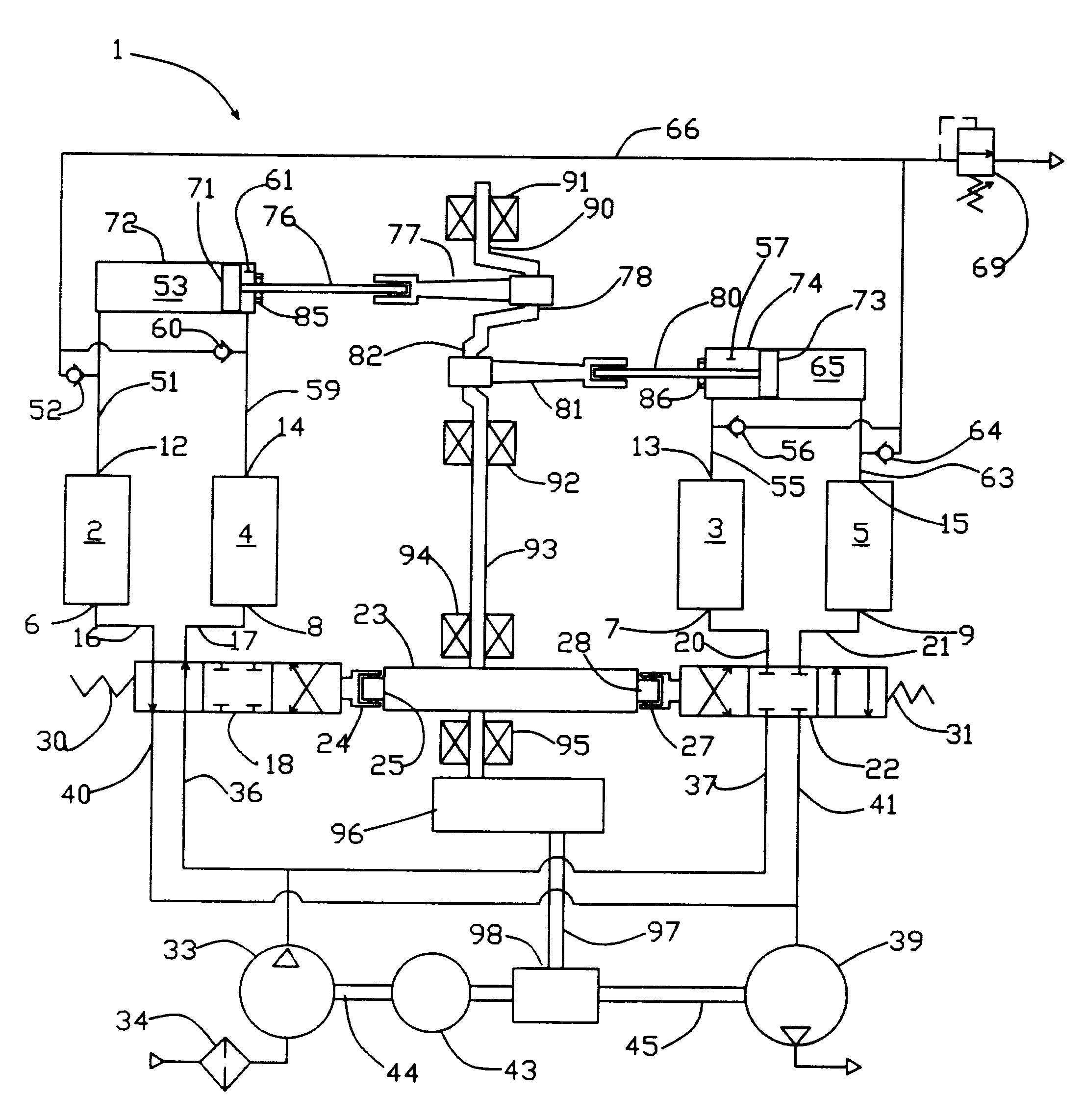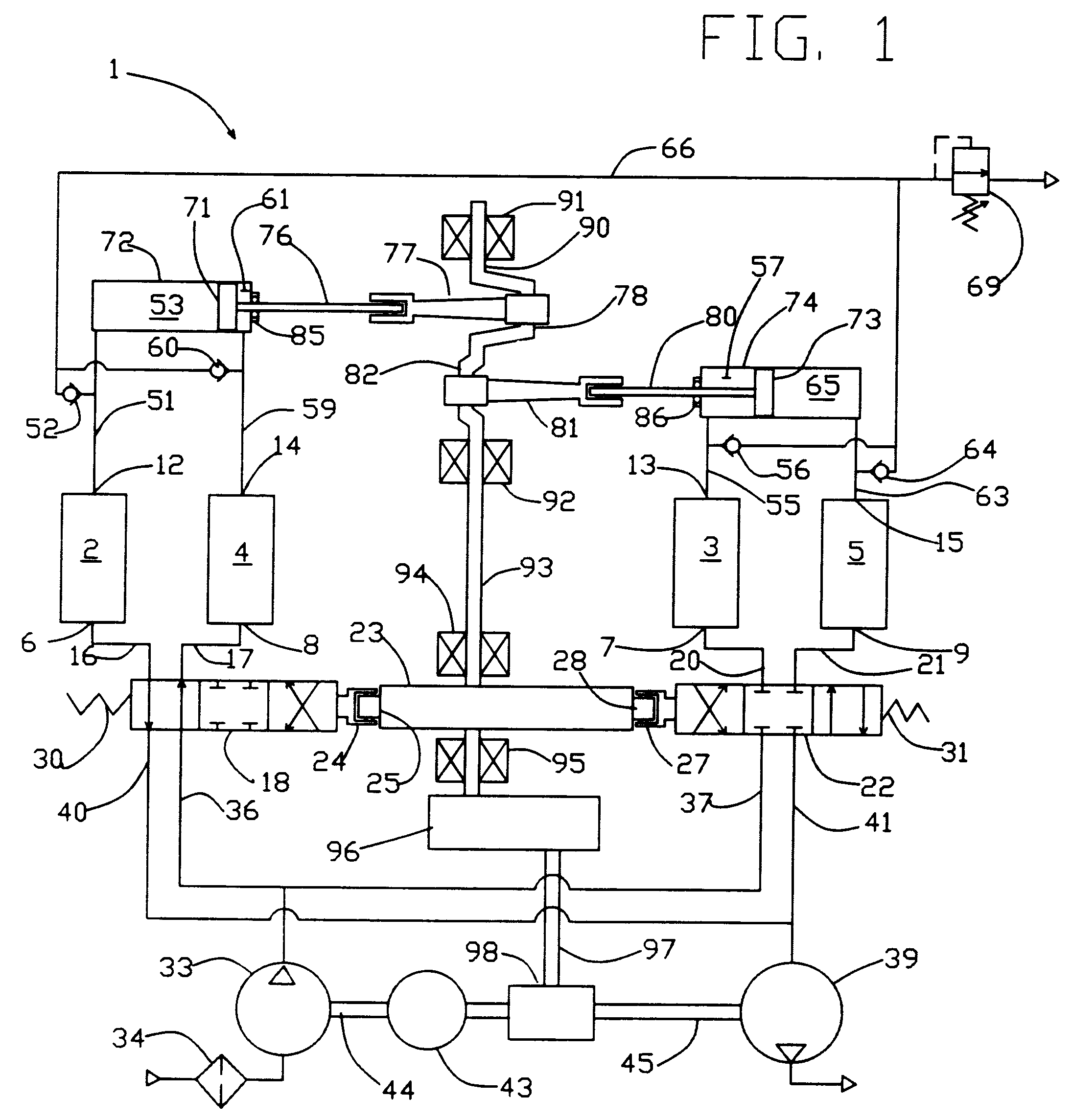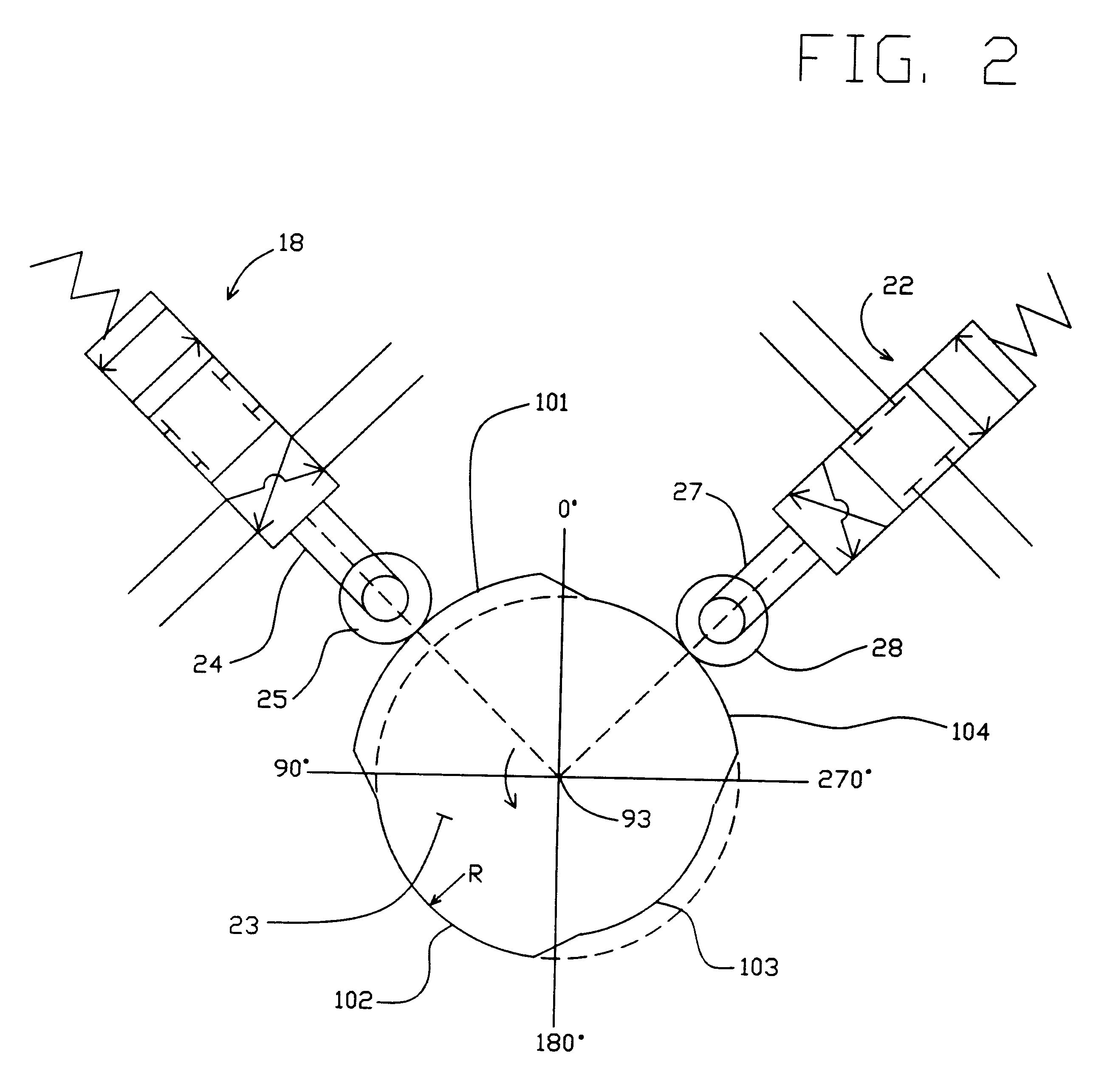High frequency pressure swing adsorption
a high frequency pressure and adsorption technology, applied in the direction of nitrogen purification/separation, separation of dispersed particles, separation processes, etc., can solve the problems of difficult scaling up of such devices using pistons to larger scale tonnage air separation or hydrogen purification applications, and the inefficient use of applied energy in the pressure swing adsorption process
- Summary
- Abstract
- Description
- Claims
- Application Information
AI Technical Summary
Benefits of technology
Problems solved by technology
Method used
Image
Examples
embodiment 300
is an oxygen concentrator apparatus, with the adsorbent beds provided as spiral rolls of adsorbent sheet material in each expansion piston. As in apparatus 120 of FIG. 4, double-acting feed / exhaust cylinders 121 and 122 provide the combined feed compressor and exhaust vacuum pump functions. Feed / exhaust cylinder 121 includes a feed chamber 123 and an exhaust chamber 124, separated by piston 125 on piston rod 126 reciprocating within cylinder 121. Likewise, identical feed / exhaust cylinder 122 includes a feed chamber 133 and an exhaust chamber 134, separated by piston 135 on piston rod 136 reciprocating within cylinder 122.
Inlet check valves 140 and 141 are provided to admit feed flow from inlets 142 and 143 to feed chambers 123 and 133 respectively. Exhaust check valves 144 and 145 are provided to discharge exhaust flow from exhaust chambers 123 and 133 respectively.
Piston 125, piston rod 126, piston 135 and piston rod 136 are reciprocated by scotch yoke 301. Rotary crank 302 is driv...
embodiment 400
is an oxygen concentration apparatus with provision for partial powering by waste heat, and with the adsorbent beds provided as stacks of adsorbent loaded annular discs.
The feed blower and vacuum exhaust functions are provided again by double-acting feed / exhaust cylinders, as in embodiment 300. Here the four adsorbent beds 401, 402, 403 and 404 are mounted in opposed pairs in vessels 405 and 406 which also serve as double-acting expansion cylinders.
Typical adsorbent bed 401 is provided as a stack of thin annular discs 410 supporting adsorbent material. The discs may be made of an inert sheet material coated on both sides with the adsorbent, or may be made as a composite of the adsorbent with a fibrous reinforcement and suitable binder to form a porous matrix. The discs 410 are spaced apart, by an equal distance between each adjacent pair of discs, to define flow channels 411. The flow direction in channels 411 will be substantially radial. A feed flow distributor 412 (e.g. a cylindr...
embodiment 500
is an oxygen concentration apparatus with cam actuated feed and exhaust poppet valves, and with a rotary distributor valve for reflux of oxygen concentrated gas at the product ends of the four adsorbent beds 501, 502, 503 and 504.
At their product ends, the four beds are connected to a rotary distributor valve controlling "light reflux" functions of pressure equalization, cocurrent blowdown, and light reflux pressurization. This distributor valve is connected to the beds, and allows oxygen enriched air to flow between pairs of beds for each equalization, cocurrent blowdown and light reflux pressurization step. The valve rotor and a rotary cam for actuating the spool valves are driven by the same shaft.
As with the above TCPSA systems, power consumption is reduced since the compressor and vacuum pump each "ride" the adsorbent bed for respectively feed pressurization and countercurrent blowdown steps. Again, the average working pressure across each of the compressor and vacuum pump is l...
PUM
| Property | Measurement | Unit |
|---|---|---|
| thick | aaaaa | aaaaa |
| width | aaaaa | aaaaa |
| pressure | aaaaa | aaaaa |
Abstract
Description
Claims
Application Information
 Login to View More
Login to View More - R&D
- Intellectual Property
- Life Sciences
- Materials
- Tech Scout
- Unparalleled Data Quality
- Higher Quality Content
- 60% Fewer Hallucinations
Browse by: Latest US Patents, China's latest patents, Technical Efficacy Thesaurus, Application Domain, Technology Topic, Popular Technical Reports.
© 2025 PatSnap. All rights reserved.Legal|Privacy policy|Modern Slavery Act Transparency Statement|Sitemap|About US| Contact US: help@patsnap.com



